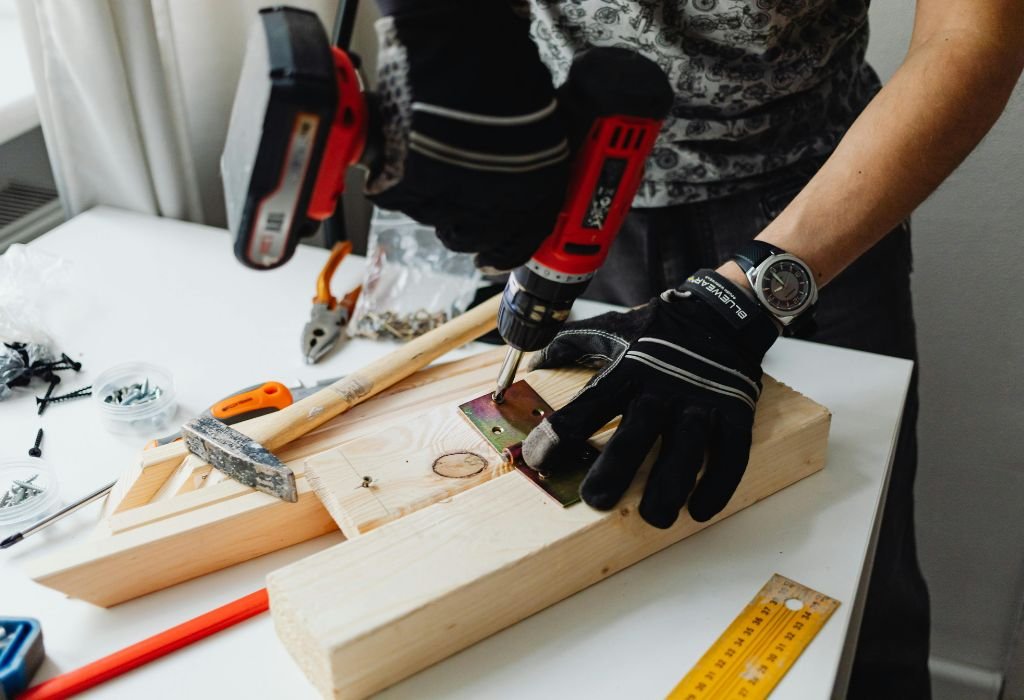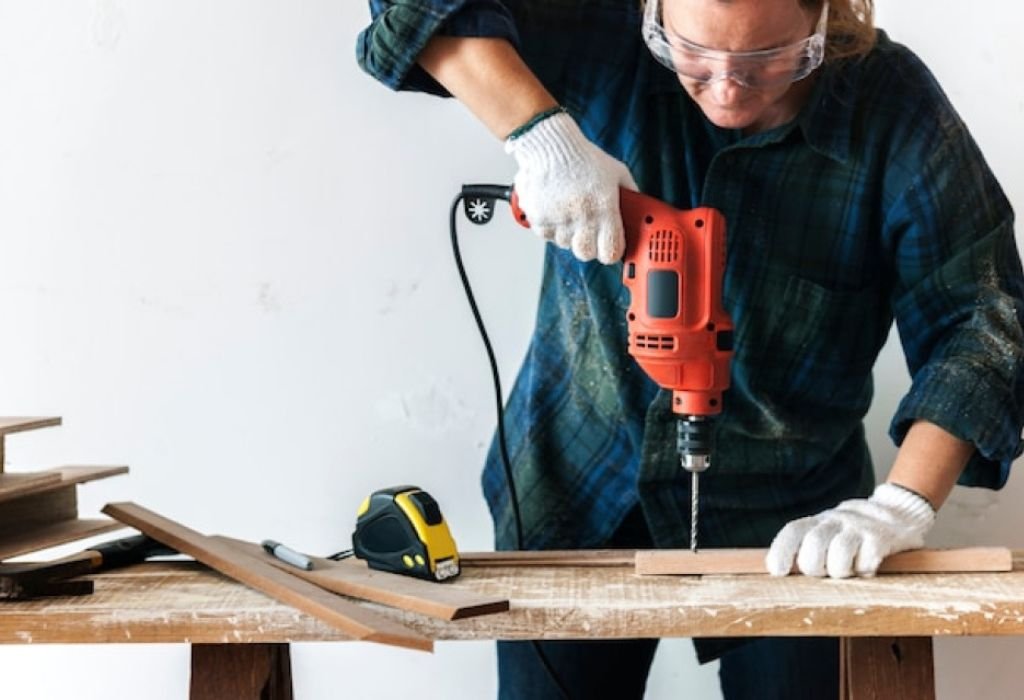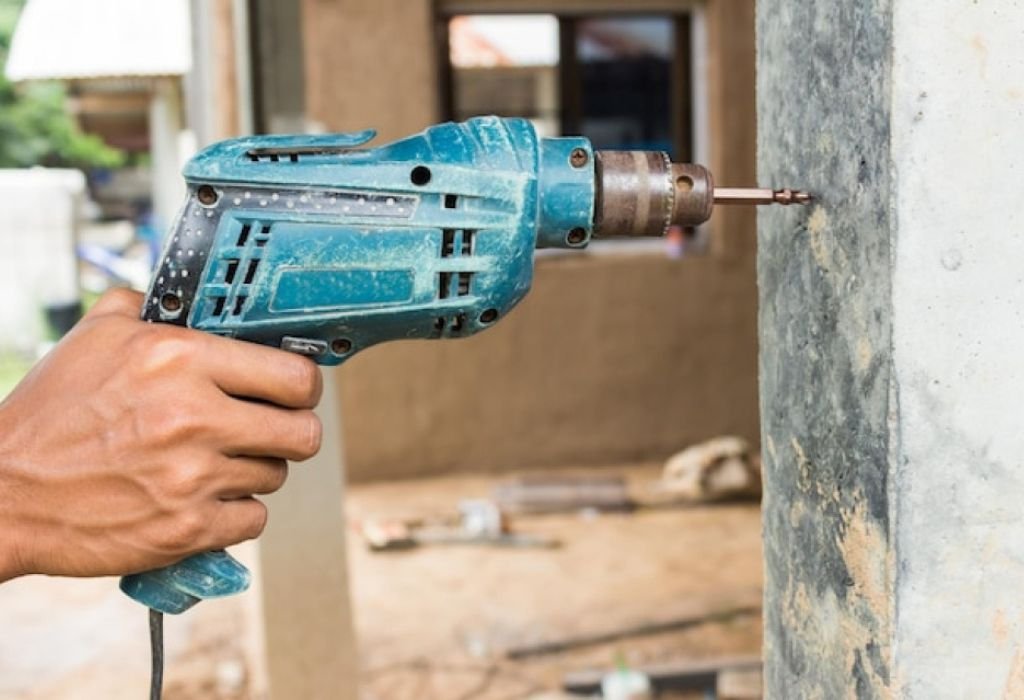At first glance, a hammer drill and an impact driver look surprisingly similar. Both are handheld power tools, both are cordless in most modern versions, and both are marketed as “must-haves” for DIYers and professionals.
Yet the truth is, these tools are designed for completely different purposes. One is made for drilling into hard masonry like concrete and brick, while the other is built for driving screws and bolts with high torque.
A recent survey shows that more than 60% of beginner DIYers admitted to using the wrong drill/driver at least once when working on home projects. This confusion is common because of the overlapping designs and sometimes vague marketing.
So, is a hammer drill the same as an impact driver? Can one tool replace the other? In this guide, we’ll break down their mechanics, uses, key differences, pros and cons, and answer the most common questions.
By the end, you’ll know exactly when to use a hammer drill, when to use an impact driver, and why owning both might be the smartest choice.
What Is a Hammer Drill? (Definition & Basics)

A hammer drill is a power tool designed specifically for drilling into masonry. Unlike a standard drill driver, it doesn’t just spin the bit—it adds a forward hammering action that pounds the bit into hard surfaces.
This hammering is generated by a percussion mechanism inside the tool. It rapidly pushes the bit forward while it rotates, creating thousands of hammer blows per minute.
Most hammer drills come with a chuck that holds round or hex-shank bits. Unlike impact drivers, they can accommodate a wide variety of drilling bits, especially masonry bits.
Hammer drills also include clutch settings and speed controls, which allow you to switch between standard drilling mode and hammer mode. This makes them somewhat versatile, since they can drill into wood, metal, or masonry depending on the setting.
Corded hammer drills are common in construction because they provide continuous power. Cordless versions, powered by lithium-ion batteries, have become increasingly popular for portability.
In short, a hammer drill is the tool you need when you’re working with concrete, brick, stone, or mortar. It combines rotation with forward percussion, making it one of the most effective tools for masonry drilling.
What Is an Impact Driver? (Definition & Basics)
An impact driver, on the other hand, is designed for fastening screws and bolts. Instead of forward hammering, it uses a hammer-and-anvil mechanism that delivers rotational impacts (measured in impacts per minute, or IPM).
This concussive action produces much higher torque than a drill driver. It allows screws and fasteners to be driven into dense materials without stripping the screw head or exhausting the user.
Impact drivers don’t use a chuck. Instead, they feature a ¼-inch hex collet, which only accepts hex-shank bits designed to handle high torque. This makes them more specialized but extremely effective for fastening.
Cordless impact drivers are the standard today. They are lightweight, compact, and powered by 12V, 18V, or 20V lithium-ion batteries. Brushless models are especially popular for their efficiency and durability.
Unlike drills, impact drivers don’t have a clutch. Instead, the hammer-and-anvil system automatically adjusts torque based on resistance, making it nearly foolproof for screwdriving.
To summarize, an impact driver is a fastening powerhouse. It excels at driving long screws, lag bolts, and other fasteners into wood, metal, or composites where a drill would struggle.
Hammer Drill vs Impact Driver: Key Differences

Although they may look alike, hammer drills and impact drivers differ in several important ways.
1. Mechanism of Action
- Hammer drill: Combines rotation with forward hammering (percussion).
- Impact driver: Combines rotation with rotational torque bursts (hammer-and-anvil).
2. Primary Purpose
- Hammer drill: Drilling holes into masonry (concrete, brick, stone).
- Impact driver: Driving screws and bolts with high torque.
3. Torque & Control
- Hammer drill: Lower torque, but better for controlled drilling.
- Impact driver: Very high torque, excellent for fastening.
4. Chuck vs Collet
- Hammer drill: Uses a chuck, can accept round and hex bits.
- Impact driver: Uses a ¼-inch hex collet, only for hex-shank bits.
5. Noise & Vibration
- Hammer drill: Very loud and produces significant vibration when used on masonry.
- Impact driver: Loud, but vibration is absorbed by the mechanism, reducing wrist strain.
6. Versatility
- Hammer drill: Can function as a regular drill when hammer mode is off.
- Impact driver: Specialized for fastening, limited for drilling tasks.
Quick Comparison Table
| Feature | Hammer Drill | Impact Driver |
| Mechanism | Percussion (forward hammering) | Hammer-and-anvil (rotational torque) |
| Main Use | Masonry drilling (concrete, brick) | Driving screws and bolts |
| Chuck/Collet | Standard chuck (round/hex bits) | ¼-inch hex collet only |
| Torque | Moderate | Very high |
| Precision | Good for drilling | Good for fastening |
| Noise | Loud with heavy vibration | Loud but less wrist strain |
| Versatility | Can double as drill | Specialized, less versatile |
Can a Hammer Drill Be Used as an Impact Driver?
This is one of the most common questions beginners ask. The short answer is: No, not effectively.
A hammer drill is not designed for screwdriving. While you can technically drive screws with it, you’ll quickly run into problems:
- Stripped Screws – Hammer drills lack the torque regulation of impact drivers. You’ll often strip screw heads, especially with long screws.
- User Fatigue – Hammer drills are heavier and harder to control for repetitive fastening tasks.
- Poor Results – Driving long screws into hardwood or dense material with a hammer drill is inefficient compared to using an impact driver.
Example: If you’re building a deck, trying to use a hammer drill for hundreds of screws will wear you out. An impact driver will handle it smoothly and much faster.
So, while a hammer drill can technically drive screws, it’s the wrong tool for the job. For fastening applications, an impact driver is always the better choice.
When to Use a Hammer Drill vs Impact Driver
Knowing when to use each tool is the key to efficiency and good results.
- Use a hammer drill for:
- Drilling into concrete, brick, stone, or mortar.
- Projects involving masonry anchors or wall fixings.
- Occasional wood or metal drilling (with hammer mode off).
- Use an impact driver for:
- Driving long screws, lag bolts, or fasteners.
- Woodworking projects like decking, framing, or fencing.
- Automotive tasks with socket adapters (light-duty bolts).
- Any job where torque and speed matter more than precision.
Professionals often keep both tools. The hammer drill is their masonry specialist, while the impact driver is their fastening workhorse.
Pros and Cons of Each Tool

Hammer Drill Pros
- Excellent for concrete and masonry.
- Can double as a standard drill when hammer mode is off.
- Works with a wide range of drill bits.
Hammer Drill Cons
- Heavy and bulky.
- Generates a lot of noise and vibration.
- Not efficient for driving screws.
Impact Driver Pros
- High torque for fast screwdriving.
- Compact and lightweight design.
- Reduces wrist strain during long projects.
- Prevents stripped screws and cam-out.
Impact Driver Cons
- Limited bit compatibility (hex-shank only).
- No clutch or fine torque control.
- Not suitable for masonry drilling.
FAQs
1. Is a hammer drill the same as an impact driver?
No. A hammer drill is designed for masonry drilling, while an impact driver is designed for fastening screws and bolts.
2. Can I use a hammer drill as an impact driver?
Not effectively. It can drive screws, but it’s inefficient, tiring, and risks stripping screws.
3. Can I use an impact driver for concrete?
No. Impact drivers lack forward hammering action. You need a hammer drill for concrete or brick.
4. Can a hammer drill be used as a regular drill?
Yes, with hammer mode turned off, it functions like a standard drill.
5. Why are impact drivers better for screws?
They deliver high torque bursts, keeping bits seated and preventing stripping.
6. Which tool is better for beginners?
A drill is usually better to start with because of its versatility. Impact drivers are excellent for heavy fastening.
7. Can I drill holes with an impact driver?
Yes, but only with hex-shank bits. For accurate drilling, a drill or hammer drill is better.
8. Are hammer drills louder than impact drivers?
Yes, hammer drills produce more noise and vibration, especially when used on masonry.
9. Do professionals use both tools?
Yes. Most pros keep both a hammer drill and an impact driver for different jobs.
10. What bits do hammer drills and impact drivers use?
Hammer drills use standard drill bits, especially masonry bits. Impact drivers require ¼-inch hex-shank bits.
11. Which tool lasts longer?
Both can last years with proper care. Brushless motor versions of both tools generally last longer.
12. Which is more compact?
Impact drivers are usually smaller and lighter, making them easier to use in tight spaces.
13. Which is better for woodworking?
Impact drivers are better for screws, while drills are better for drilling holes.
14. Can I use a hammer drill for screws in wood?
Yes, but it’s not efficient. A drill or impact driver is better suited for the task.
15. Are cordless versions as powerful as corded?
Modern cordless hammer drills and impact drivers are very powerful, but corded models still deliver consistent power for prolonged use.
Conclusion
A hammer drill and an impact driver may look alike, but they serve very different purposes. The hammer drill is designed for drilling into hard masonry surfaces, while the impact driver is built for fastening screws and bolts with high torque.
While a hammer drill can technically drive screws, it is not efficient and risks damaging both the screws and the tool. Similarly, an impact driver cannot replace a hammer drill for masonry work.
For most DIYers, starting with a versatile drill or drill driver is enough. If your projects involve concrete, add a hammer drill. If you do lots of fastening, add an impact driver.
Ultimately, owning both tools ensures you’re ready for any project—whether it’s hanging shelves on a brick wall or building a deck in your backyard. By choosing the right tool for the job, you’ll save time, effort, and frustration.

I’m John F. Nicholas, the founder, lead writer, and drill enthusiast behind 101drill.com. With years of hands-on experience in power tools and DIY projects, I created this platform to share practical knowledge, expert tips, and real-world insights to help others master the art of drilling.
